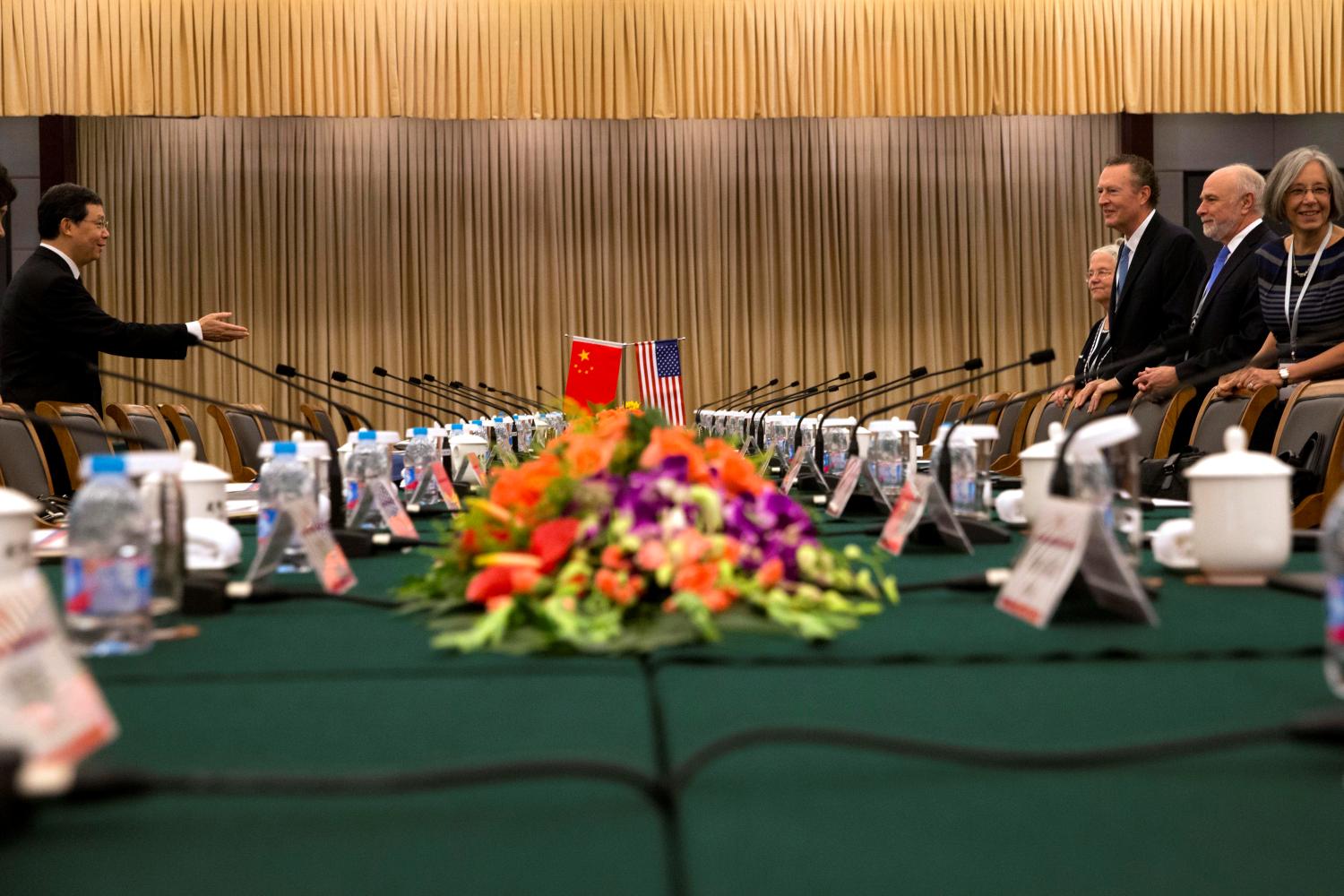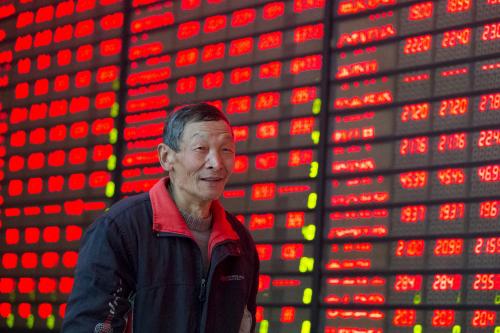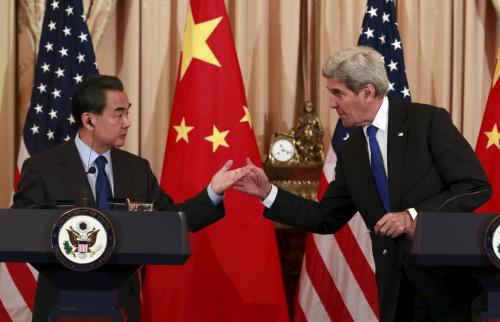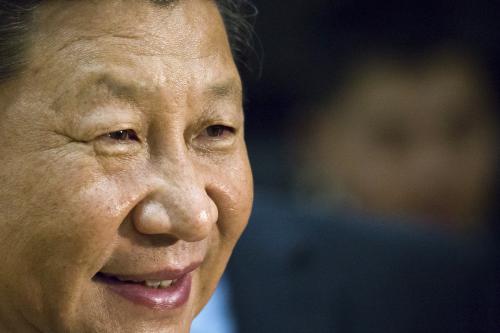 What is the state of the U.S.-China security relationship as President Obama’s term in office concludes? Given the centrality of this relationship to the future of the region and indeed the planet, as well as the emphasis that President Obama has appropriately placed upon it, the question bears asking at this milestone in history.
What is the state of the U.S.-China security relationship as President Obama’s term in office concludes? Given the centrality of this relationship to the future of the region and indeed the planet, as well as the emphasis that President Obama has appropriately placed upon it, the question bears asking at this milestone in history.
In Obama’s first term, his administration articulated a policy of pivoting or rebalancing to the Asia-Pacific region, not only in security terms but in regard to broader economic and political issues as well. Over the course of his presidency, China arguably reached near-superpower status by some measures, with a GDP roughly equal to America’s in purchasing power parity terms and nearly two-thirds as great by standard exchange-rate-based metrics. The People’s Republic of China’s (PRC) military budget is now clearly the second greatest in the world, and China has used these additional resources to streamline and modernize increasingly high-technology armed forces. China is the world’s top manufacturer by a considerable margin, and is also enhancing its indigenous research and development activities—while also continuing to take intellectual property from others on a large scale, it must be said. President Xi Jinping’s leadership is now firmly established, and the confidence with which China conducts itself on the world stage is rather striking.
President Obama’s rebalance strategy has set the context for much of the evolution of U.S.-China relations over the past five years. It has been generally well received among Americans of both parties and among American allies in Asia as well. It would seem, at least in much of its essence, to have a good chance of enduring for many years to come.
Yet whatever the wisdom of the rebalance, not all is well in U.S.-China relations. Many Americans see a China that is becoming dangerous in the South China Sea and East China Sea in particular—with even broader and greater ambitions perhaps beginning to develop deep within the Middle Kingdom as the PRC’s power grows. Many Chinese see a United States that is bent on world predominance and, most of all, regional hegemony maintained in conjunction with allies such as Japan. And when the United States talks of rebalance or pivot, many Chinese hear “containment”—carried out at their country’s expense. Other factors can intercede negatively as well. For example, North Korea’s nuclear provocations, including two tests in 2016 to date, amplify other dangers that can affect both China and the United States—and highlight the significance of difference in their preferred approaches to regional security.
In this paper, which builds on a book that I had the privilege of co-authoring with former Deputy Secretary of State James Steinberg in 2014, I attempt a net assessment of the U.S.-China security relationship in the context of the rebalance, and measured against the agenda that Steinberg and I proposed. The focus is squarely on security matters. This paper focuses on regional hotspots and possible contingencies, as well as on patterns of operational interaction, confidence-building measures, communications mechanisms, and engagement. A longer paper I am also writing this year, from which this essay is drawn, considers a somewhat broader range of security issues and reaches a similar conclusion.
The agenda that Secretary Steinberg and I developed drew of course on the ideas of others, and on existing U.S. policy objectives, but also sought to expand upon them and knit them together in a cohesive whole. Our goal—as the book’s title of “Strategic Reassurance and Resolve” suggests— was to recommend ways that Beijing and Washington could manage their relationship, and their competition, through the complementary tools of reassurance and resolve.
The paper’s main argument is this: The U.S.-China security relationship is a work in progress, and recent trends are mixed. As challenging as things are in U.S.-China relations, however, they are not bad relative to what history might lead us to expect about how a rising power and an established power will get along. This is not a call for complacency. But it is a reminder to policymakers, pundits, and publics in both countries not to overreact at relatively minor offenses, or to lose historical perspective on where the relationship is today. The two countries are partly friends but also partly rivals. Their relationship will surely be complex for years, if not decades, to come. Yet it is being managed tolerably well, and can continue to be managed in a way that preserves general stability—provided that both sides, and key regional players like Japan, South Korea, the Philippines, Australia, and Taiwan, make the requisite efforts. At a time when voices in both countries—and particularly the United States during a presidential election year—sometimes call for much more assertive or confrontational policies by one of the countries towards the other, I would argue for relative caution and calm. Indeed, even if I am right that U.S.-China security relations should be seen as relatively acceptable on empirical grounds, a continuation of recent trends whereby each country is increasingly wary of the other could create a dangerous downward spiraling of relations anyway. Perceptions could supersede objective reality. The so-called security dilemma could increasingly influence the relationship; fears could snowball and lead to a dangerous action-reaction cycle. Part of this essay’s purpose is to warn about the dangers of such potentially ill-founded and negative perceptions, without papering over the real problems between Beijing and Washington that require attention.






